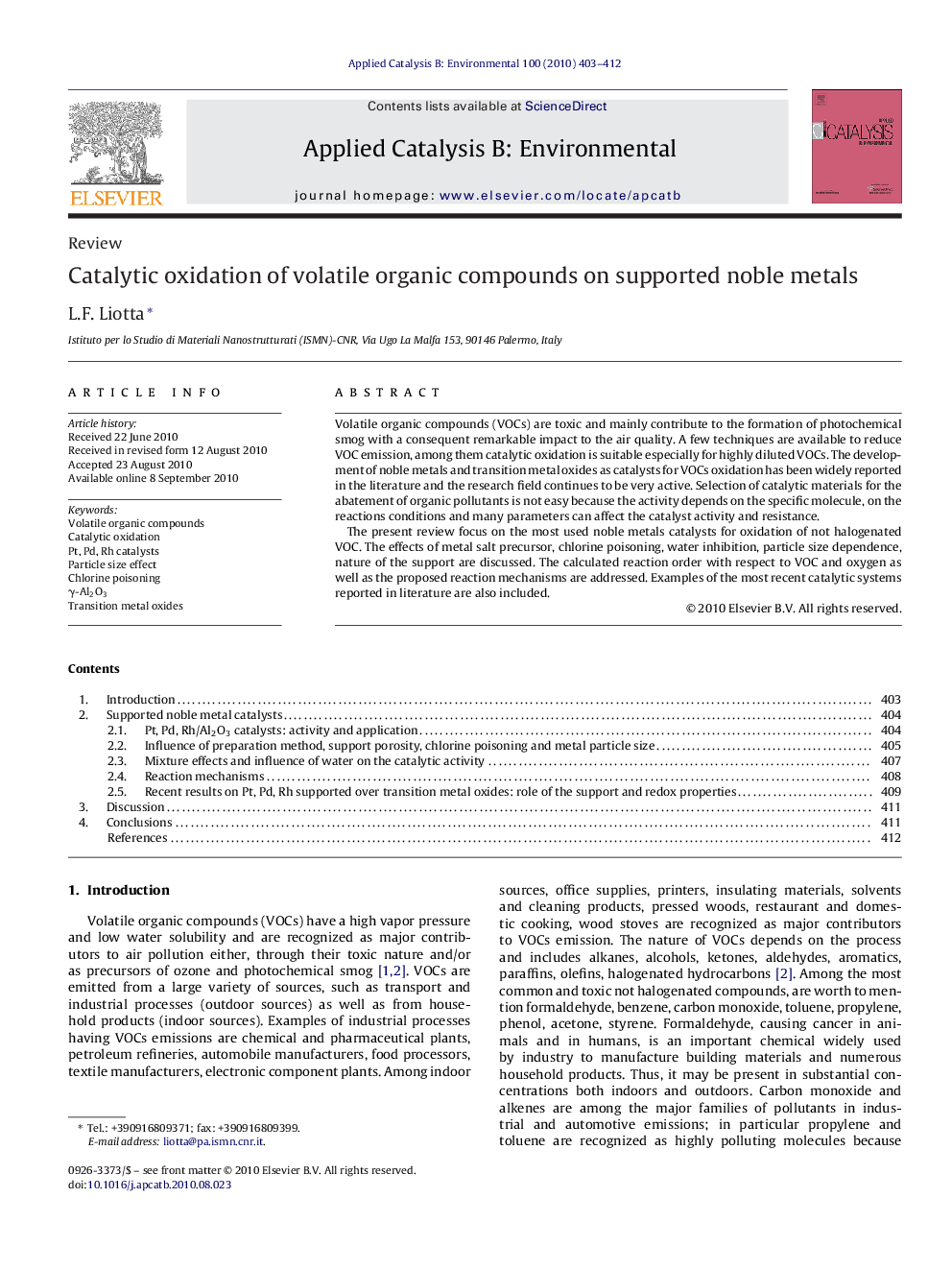| Article ID | Journal | Published Year | Pages | File Type |
|---|---|---|---|---|
| 47022 | Applied Catalysis B: Environmental | 2010 | 10 Pages |
Volatile organic compounds (VOCs) are toxic and mainly contribute to the formation of photochemical smog with a consequent remarkable impact to the air quality. A few techniques are available to reduce VOC emission, among them catalytic oxidation is suitable especially for highly diluted VOCs. The development of noble metals and transition metal oxides as catalysts for VOCs oxidation has been widely reported in the literature and the research field continues to be very active. Selection of catalytic materials for the abatement of organic pollutants is not easy because the activity depends on the specific molecule, on the reactions conditions and many parameters can affect the catalyst activity and resistance.The present review focus on the most used noble metals catalysts for oxidation of not halogenated VOC. The effects of metal salt precursor, chlorine poisoning, water inhibition, particle size dependence, nature of the support are discussed. The calculated reaction order with respect to VOC and oxygen as well as the proposed reaction mechanisms are addressed. Examples of the most recent catalytic systems reported in literature are also included.
Graphical abstractFigure optionsDownload full-size imageDownload as PowerPoint slideResearch highlights▶ VOCS indoor are emitted from food processors, wood stoves and fireplaces. ▶ Pt, Pd/high-surface area Al2O3 monolithic catalysts are commonly used. ▶ The catalytic activity depends on the noble metal and varies with the nature of VOC. ▶ Particle size sensitivity for propene and toluene oxidation. ▶ Pt/TiO2 catalysts give catalytic oxidation of formaldehyde at room temperature.
